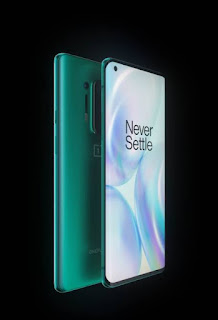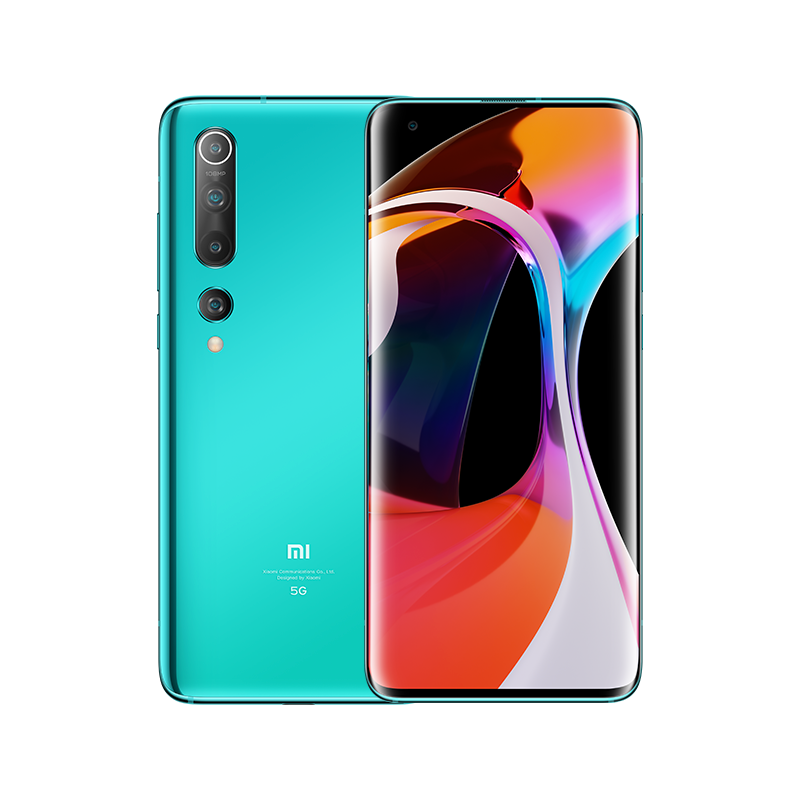One plus 8 and 8 pro
With the easing up of the lockdown and a glimpse of normalcy returning to our lives, I finally managed to get my hands on the OnePlus 8. After my initial scepticism, it's time to see whether this phone has enough merit for me to change my opinion about it. With prices starting well above Rs. 40,000, the OnePlus 8 is now bordering on flagship territory, which means it's actually competing directly with older flagships from Samsung and Apple.
What's new in the OnePlus 8?
The OnePlus 8 is the spiritual successor of the OnePlus 7 (Review) and will go on to eventually replace the OnePlus 7T (Review). Compared to the 7T, the main new features are 5G support and a new-ish design. The OnePlus 8 features the Snapdragon 865 processor, which promises better performance and efficiency over last year's model. 5G doesn't mean much to us in India at the moment but it doesn't hurt to have it.
OnePlus 8 Design: Subtle, yet distinctive
I wasn't a big fan of the circular camera bump on the OnePlus 7T and I'm glad that's gone away. However, I do miss the frosted finish of the glass back. The Onyx Black version of the OnePlus 8 has a glossy finish, which picks up fingerprints very easily. It's also very slippery, which did result in accidental drops when I had the phone lying on a chair's armrest. There's a case provided in the box, which should help.
The display now has a hole-punch cutout, in the upper left corner. OnePlus has said goodbye to the notch and I think it's for the best. The hole-puch isn't the smallest I've seen but it gives the OnePlus 8 a fresh look.
As I mentioned in my first impressions, the OnePlus 8 is surprisingly comfortable to hold given its display size. It's also slim and not too heavy. The black version looks fine, but I was really looking forward to seeing the Interstellar Glow trim first-hand, as I feel that that's the colour to get.
As you'd expect, build quality is excellent thanks to the curved-edge front and back glass sandwiching the metal frame. The buttons are easy to reach, and the alert slider is handy as always. The USB Type-C port, SIM tray, and main speaker are lined up on the bottom.
Overall, the new simplified design is welcome, and I like that OnePlus isn't trying too hard to impress. This phone might look a bit boring in the pictures, but it's instantly recognisable as a OnePlus device.
OnePlus 8 Display: Bright and vivid
The display is one of the most important parts of any smartphone, and the OnePlus 8 has a very good one. It's a 6.55-inch AMOLED panel with sloping sides, a wide colour gamut, and a hole-punch cutout in the upper left corner. OnePlus has used 3D Corning Gorilla Glass in addition to the pre-applied screen protector. I found the latter to be more of an annoyance than anything since my finger grazed against the edges when swiping in from the sides.
Other specifications include a resolution of 2400x1080 (full-HD+) pixels, HDR10+ support, a 90Hz refresh rate, and software features like reading mode, night mode, and the ability to boost colours when playing videos.
The 90Hz refresh rate makes usage in general feel fluid and snappy. You can drop down to 60Hz if you want to save a bit of battery power. HDR content looks very good on the OnePlus 8. When playing compatible shows through Netflix, the brightness and colour saturation automatically get a boost. This goes back to normal once you exit the app.
The OnePlus 8 has an in-display fingerprint sensor, which is super quick at authentication. All it takes is a quick, firm tap to unlock it. Face recognition is equally fast and works decently well in dim lighting. You can enable the ‘double-tap to wake' gesture, but what I really wanted was a raise-to-wake gesture, which is still not an option.
The 'Ambient display' feature offers a peek at which apps have sent you alerts when the screen is off, along with the time, battery level, etc. However this isn't always-on and only shows up when you tap the screen or pick up the phone. It even shows you the name of the music track being played, but you can't control playback from here.
One thing to note is that since the hole-punch cutout isn't very close to the top edge, any app that needs to black out this area will have to create a thick black bar. This is most noticeable in some games and video apps, when you need to hold the phone horizontally. You can also black out the area permanently but that just looks odd.
OnePlus 8 Performance: Keeping it cool
With its top-end hardware, it's hardly surprising that performance from the OnePlus 8 is impressive. However, what really caught our attention is that it doesn't heat up all that much in the process. That's not something we could say for the Mi 10 5G (Review), for example. The OnePlus 8 aces through benchmarks too. In AnTuTu, we got 5,78,289 points, while GFXbench's Car Chase graphics test returned 46fps, which is one of the tougher scenes in the suite. The sides and a few spots on the back, below the camera, do get warm after non-stop benchmarking, but never too hot. This speaks a lot about the thermal management design of the phone.
We reviewed the top-end variant of the OnePlus 8, which has 12GB of RAM and 256GB of storage, priced at Rs. 49,999. There's also an option with 8GB of RAM and 128GB of storage for Rs. 44,999, and an Amazon-exclusive variant with 6GB of RAM and 128GB of storage at Rs. 41,999.
Gaming performance is top-notch. Fortnite can run at 90fps and the experience is good, but you'll have to manually change this in the settings. Other equally demanding games such as PUBG Mobile and Call of Duty: Mobile ran just fine too. We tried a bunch of racing games including Asphalt 9: Legends and Metal Madness, both of which ran at their highest graphics settings and were quite fun to play. The top metal portion of the phone did get hot in some games, like Fortnite, but this wasn't the case with most others. Game Space is a neat utility that lets you temporarily lock the brightness level, disable incoming notifications, and reduce distractions when gaming.
Games and movies are especially enjoyable thanks to the very good stereo speakers on the OnePlus 8. The earpiece and bottom-firing speaker work together to produce very good, balanced stereo sound. Dolby Atmos enhancement also helps boost the low and mid-range frequencies, which gives the sound added depth and clarity.
Apart from 5G, the OnePlus 8 also features Wi-Fi 6, Bluetooth 5.1, NFC, multiple navigation satellite systems, and all the usual sensors. You can use two Nano-SIM cards in the OnePlus 8, but there's no option to expand the storage.
OnePlus 8 Software: Clean and functional
OxygenOS is one of the reasons that fans keep coming back to OnePlus smartphones. We received a few updates after unboxing the OnePlus 8, and at the time of this review, it was running v10.5.8. This is based on Android 10, with the May security patch. The interface is clean and free from bloatware. You won't find ads or annoying alerts from stock apps clogging up your notifications shade.
At the same time, it's also well equipped with lots of shortcuts and gestures waiting to be discovered. The new launcher now offers a more seamless multitasking experience, there's 5GB of free cloud storage for backups once you sign in with a OnePlus account, a built-in screen recorder, and dynamic wallpapers.
OnePlus 8 Cameras: Going backwards?
Cameras have always been a bit of a touchy subject for OnePlus. While the 8 Pro gets some notable improvements in terms of sensors, the 8 has to make do with hand-me-downs from the 7T and one very notable reduction. The 7T did capture high-quality photos, but considering the big bump in price, I expected better.
The OnePlus 8 has the same 48-megapixel Sony IMX586 sensor with optical stabilisation as the 7T. However, it has a slightly narrower aperture of f/1.75, compared to the wider (read: better) f/1.6 aperture of the 7T. The wide-angle camera has the same 16-megapixel resolution, but again, with a marginally narrower field of view of 116 degrees (117 on the 7T).
However, the biggest change, or rather downgrade in my opinion, is the introduction of a paltry 2-megapixel macro camera in place of the 7T's telephoto camera. The outgoing model shot macros using its wide-angle camera, which means that a dedicated sensor wasn't even really necessary. This in my opinion, is a wasted opportunity, and OnePlus should have stuck with the telephoto camera. We've seen 2-megapixel macro cameras in plenty of budget phones, and honestly, I didn't wind up using it all that much.
OnePlus 8 Battery: Lasts long, very long
The OnePlus 8 has a decently big 4,300mAh battery, which lasted me a day and half on average. My usage wasn't particularly camera-heavy, but I did play a lot of games and watch a lot of Netflix, and still easily managed to sail past a full day. When usage was light, the OnePlus 8 even managed to last till the end of the second day. Considering the display was at 90Hz constantly, I would call this pretty good. Our battery loop test echoed this, running for nearly 22 hours.
Charging the phone is very quick, thanks to the Warp Charge 30T charger. Topping up a fully depleted battery took a little more than an hour, but in 30 minutes, you can charge the battery up to 61 percent.
Verdict: Should you buy the OnePlus 8?
The short answer would be — yes, absolutely. At the start, I felt that the OnePlus 8 was a bit overpriced for what it offers, and that sentiment still stands after reviewing it. It's not a massive upgrade over the 7T like I hoped, but perhaps OnePlus is saving some big upgrades for the 8T, which should be due sometime later this year.
If you currently own a OnePlus 7T, there's absolutely no need to jump to the 8. However, if you're still hanging on to your 6T or anything older, the OnePlus 8 would be worth switching to. Many are going to find it difficult to pay more than Rs. 40,000 for it, but when you look at other flagships such as the Samsung Galaxy S20 or even the iPhone 11 Pro, the OnePlus 8 still costs way less.
I do feel that OnePlus should have brought IP-rated waterproofing and wireless charging to the 8, to make it a complete value package. I would have even taken a lower IP67 rating and regular 10W wireless charging, rather than having nothing at all. I have a feeling that OnePlus will fix this with the 8T, but that's still a long wait away.
I don't think the 12GB model offers very good value, since at nearly Rs. 50,000, I would be tempted to pay a bit more and get the OnePlus 8 Pro instead. The storage is probably the only reason someone would consider it. Sadly, the Interstellar Glow colour option is only available on the top-end variant. If you're okay with 128GB of storage, the 6GB and 8GB RAM variants definitely offer better value.
- Good
- Very good build quality
- Vivid display
- Excellent performance and software
- Solid battery life
- Decent camera performance
- Bad
- No IP rating or wireless charging
- Low-light video could be better
- 12GB variant isn’t great value




Comments
Post a Comment